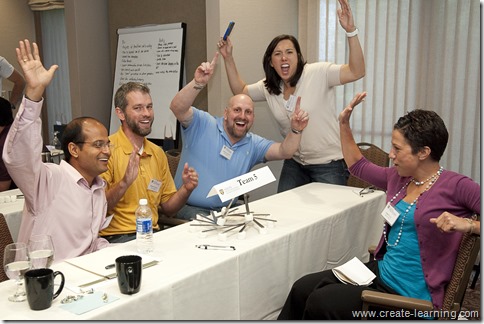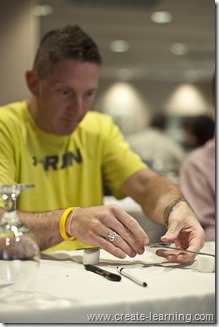Coaching individuals and teams working together to find the goal and what the solution will look like once that goal is achieved requires effort from the person and me.
This effort does not have to be me telling them what to do or them telling me what is wrong.
The effort is finding exceptions to the problem and determining how the team and person cooperate best. Then changing my interaction with them to cooperate in the best way to achieve shared goals.
Quickly finding what works … and doing more of it
This relies on the use of ‘activities’ … These may be Team Building Activities and individual field assignments that are to be completed between meetings.
Reading ‘Patterns in Brief Therapy’ Steve de Shazer shares guidelines for the process of changing serious activities into playful activities.
These guidelines can be used as whole or in part to help design effective tasks activities. The purpose of these guidelines is to help the (coach / consultant / facilitator) keep their designs based on the teams’ and / or person’s patterns in a modified form and in a different context. (1)
_______________________________________
Guidelines
- The playful acts are so performed that their ordinary, serious functions are not realized. Efforts are made to equalize the strength of the “players.”
- There is an exaggeration of some normal acts.
- The normal sequence serves as a pattern that is neither followed faithfully nor fully but is subject to arbitrary starting and stopping.
- Any player has the power to terminate play once begun.
- During the play, the dominance order may become mixed up or reversed.
- The play seems independent of any external needs of the participants and continues longer than would the actual interactions it is patterned after.
- The play is social in that it involves more than one participant, and the playfulness, therefore, can be more easily sustained.
- Signs are available to mark the beginning and the termination of playfulness.
__________________________________________
The guidelines above align with team building & executive coaching activities. Illustrating through activities a team and person develop exceptions and see ‘what works’ in a context they’re not used too and is still familiar because they just made it happen.
Examples of 1 on 1 coaching using activities:
- There are more Hire Mike to coach you and see how activities can improve your work.
- 3 Ideas for Time Management and Getting Your Work Organized
- Instead of Making People More Anxious. Make the Learning Easier
- Behave as-if your solution is happening
- Thank People for Doing Their Work
- Team Building Activities and Application to work: Nail Balance
- Quality Tools to Discover Solutions: Nine Windows
- Change is Not Only Possible, it is Inevitable
- Idealized Futures and Team Building Cover Stories
- Partner Connection
Examples of Team coaching using activities:
- There are more Hire Mike to coach your team and see how activities can improve the company, team and individual work.
- Current Method / Better Way Matrix Team Building Activity
- Build A Tower Build A Team. Corporate Team Building
- MindSpin: Team Building Activity for Brainstorming and Solution-Finding
- NOISE Analysis, an alternative to SWOT. Strategic Planning
- To-Do : In-Progress : Complete: Target Chart – Team Building and Project Management Activity
- Distinctive:Working Well:100 Days Future Perfect
- Pre-Animate: Project Planning Team Building Activity
- Partner Separation
- What’s the Companies goal & how do you fit in?
- Bright :: Blurry :: Blind
What do you think?
Looking at the guidelines shared, how can you create exceptions using activities to solve problems and improve your work and team?



